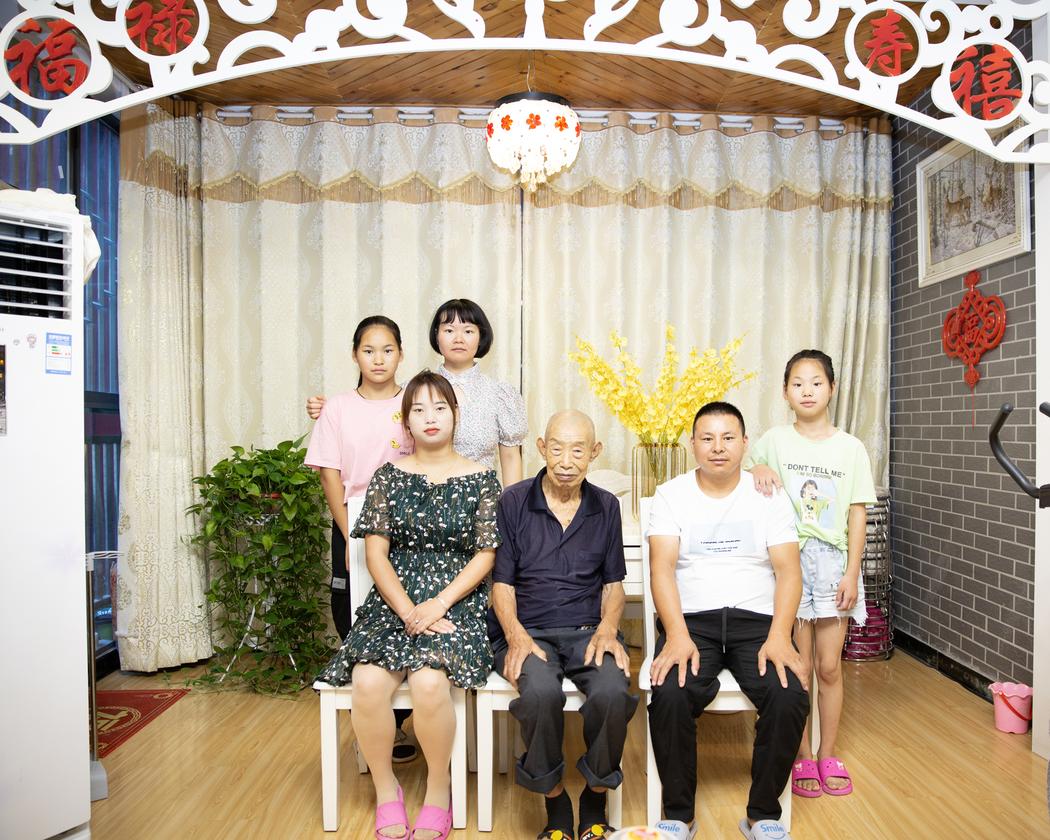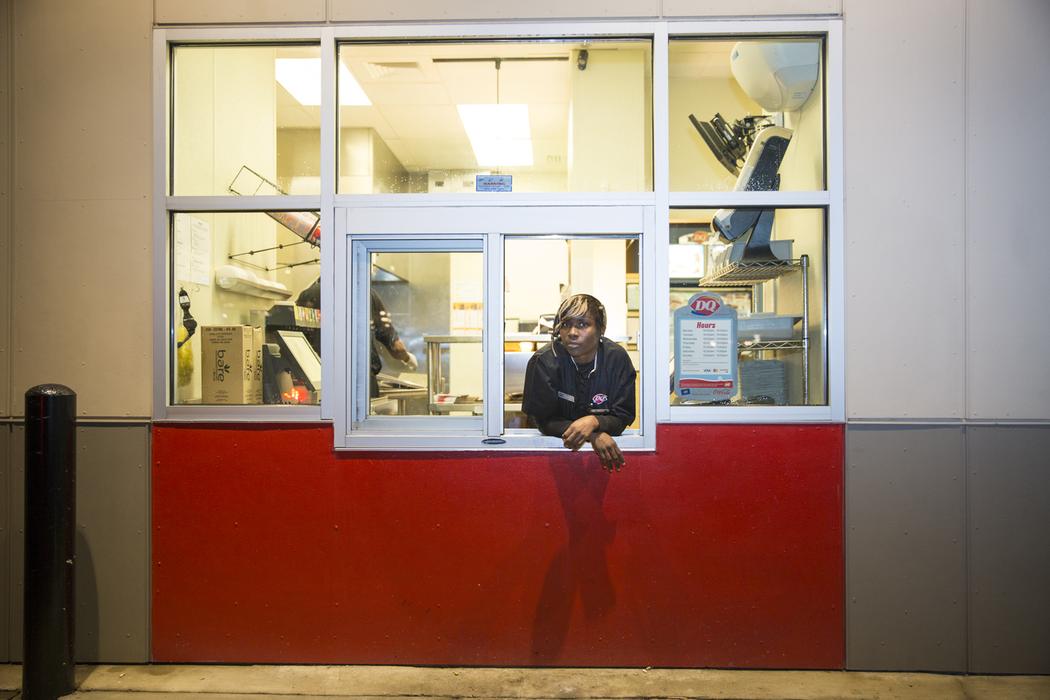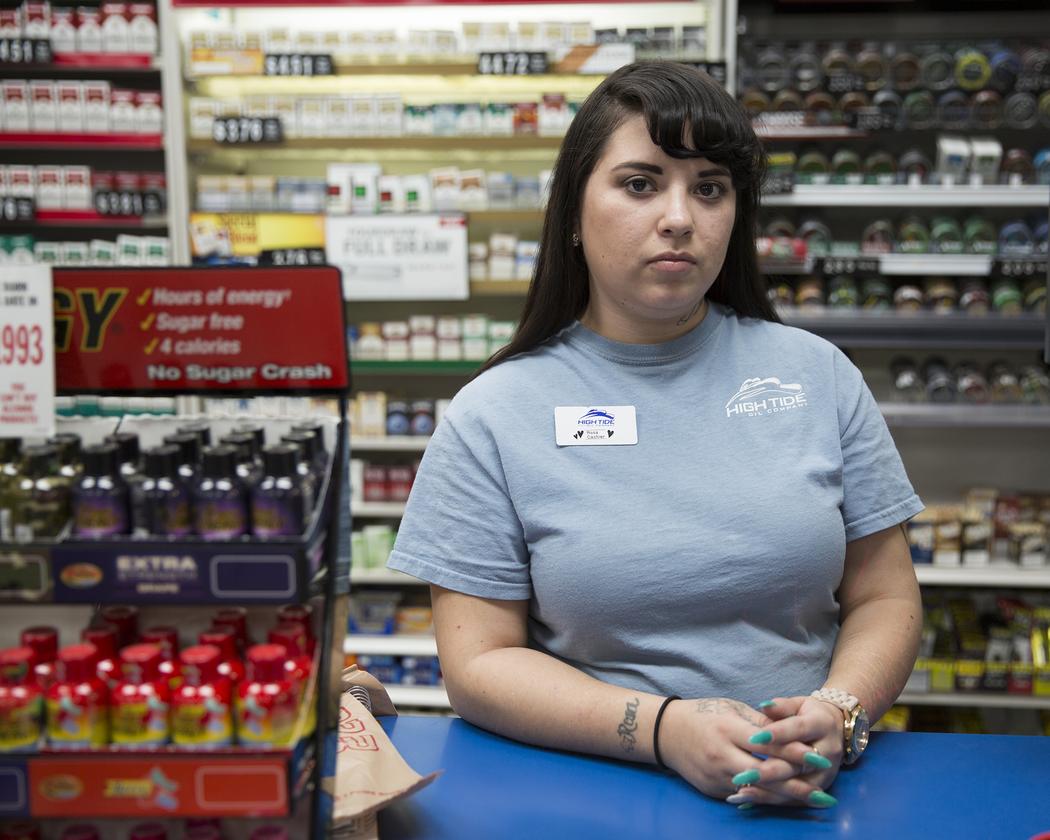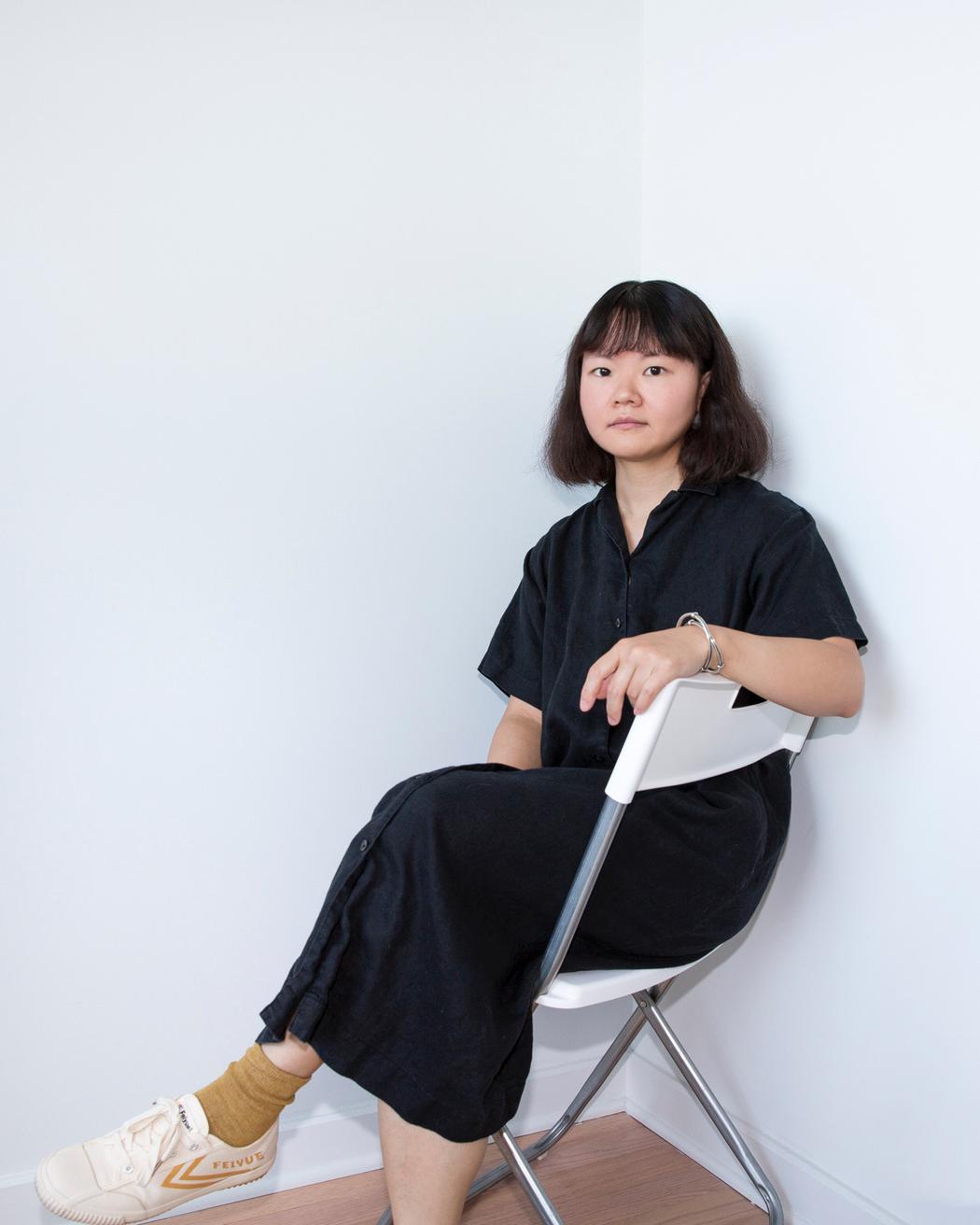Jiaqi Pan
Your education: I received my BA in Photography from the University of Alabama (2016) and an MFA from The University of Pennsylvania (2018).
Website
You emphasize collaboration over traditional portraiture. Can you describe how you guide or share authorship with your subjects?
Collaborative portraiture differs from traditional portraiture in that the outcome is unknown from the very beginning. Each time I approach a stranger and ask if they’re willing to be photographed and open to becoming part of an art project, I’m already engaging in a kind of creative risk. It may sound simple, but it’s actually quite difficult, because a refusal often means the mental image I had already begun constructing instantly collapses. But when someone says yes, I know that a certain degree of authorship shifts back to me as the photographer.
My requests are minimal: I ask the subject to assume a relaxed posture, ideally in a space they’re familiar with, and to maintain a neutral expression, which is referred to as “deadpan photography.” I’ve noticed that even those who seem assertive or performative when I first approach them tend to withdraw those traits, consciously or unconsciously, in front of the camera. No one has ever said something like, “I think I’d look better this way,” or “Can you shoot me from this angle?” There seems to be an unspoken agreement that they are handing over control to me.
This dynamic is also what prompted another project of mine, 27, where I intentionally reversed the roles. I became the subject, and invited strangers to draw my portrait. In that context, I relinquished control entirely as they decided how I looked, what posture I had, how I would be represented. So, whether I’m directing the process or giving up all authorship, my practice tends to move in one clear direction at a time. It’s never about compromise, it’s about the clarity of authorship, whether claimed or surrendered.
Many of your photographs explore themes of gender, race, and class. How do you approach these topics visually and conceptually?
Thank you for the thoughtful observation. My work does engage with themes of gender, race, and class, but I don’t approach these subjects with the intent to “speak out” or define anything through imagery. Rather than expressing a position, I’m more interested in how structural forces quietly manifest in everyday life, especially in environments that are often overlooked.
For example, in my Drive-Thru series, which I photographed in Southern U.S. cities, I noticed that the vast majority of workers I encountered at drive-thru windows were low-income African American women. This wasn’t a coincidence, nor was it something I deliberately sought out. Their presence wasn’t staged or symbolic, it simply reflected a reality shaped by structural inequality. It’s a reality that’s been there so long, and is so normalized, that people have stopped noticing it.
Visually, I work with a restrained, non-invasive camera language. I avoid emotional cues and theatrical framing. The subjects look directly into the camera, unembellished and uncommodified. The image isn’t meant to provide answers, but to function as a space of questioning. I want viewers to confront the subtle tensions and invisible forces that shape what they see.
 Jiaqi Pan | As Aunt, Xiao Yuhan, Temporary Family Series
Jiaqi Pan | As Aunt, Xiao Yuhan, Temporary Family Series
How do you maintain the balance between emotional distance and intimacy when working with your subjects?
I do think carefully about how to maintain a balance between emotional distance and intimacy when working with my subjects. It’s a delicate line, and once it is crossed, it can compromise the core principles that guide my practice.
Before the shoot, I avoid unnecessary small talk. I’ve always believed that photography is a purposeful act, and too much casual conversation can dilute both professionalism and sincerity. I don’t aim to become friends with my subjects, nor do I actively seek to learn their personal stories. What I aim to capture is a state of presence rather than a narrative or an explanation. This approach tends to create a quiet sense of trust while also establishing a clear boundary between us.
Of course, that trust doesn’t appear out of nowhere. I take care to explain each project in detail and respond to any concerns they may have. For example, when I was working on the Drive-Thru series, the question I got most often was, “Are you a journalist? Will this be published in a newspaper? Will you write something bad about me?” I completely understood their hesitation, especially considering that we had only just met. But in those few minutes of interaction, there has to be a form of intimacy, one that allows them to feel safe, to let their guard down. It’s a very brief but carefully held equilibrium.
During the shoot, I’m also intentional about avoiding overly emotional visual strategies, such as dramatic lighting or extreme close-ups. I tend to favor restrained, stable compositions that present the subject in a calm, neutral space. This helps prevent my own emotions from interfering with the image and gives the viewer more space to construct their own emotional relationship with the work.
Your “Drive-Thru” series and “Temporary Family” series reflect different types of relationships and spaces. How do these settings inform your exploration of identity?
My projects Drive-Thru and Temporary Family reflect two very different kinds of spaces and relationships, and together they have shaped how I think about the construction of identity.
Drive-Thru was created in a public space where the subjects are in a position of being observed. The individuals I photographed, mostly African American women working low-wage jobs at drive-thru windows, occupy roles that are shaped by race, gender, and class. The window frames not only serve as a physical boundary but also as a metaphorical one, highlighting how social structures can enclose and define individuals. In this project, identity appears as something assigned from the outside, dictated by systems and environments beyond one’s control.
In contrast, Temporary Family marked the first time I stepped out of the role of observer and entered the private sphere, building intimate, imagined relationships with strangers. I invited families to adopt me as a temporary family member, to name me, and to create a fictional identity for me within their household. Although the identity they gave me was entirely constructed, through the act of photography it acquired a sense of reality, as if it had existed. This experience made me more aware that identity isn’t just imposed; it can also be negotiated, performed, and imagined within relationships and through images.
Together, these two projects reflect the dual nature of identity in my work: on one hand, how it is shaped and constrained by external structures, and on the other, how it can be fluid, relational, and co-created.
 Jiaqi Pan | Dq, Northport, Al From Drive Thru Series
Jiaqi Pan | Dq, Northport, Al From Drive Thru Series
What role does repetition or seriality play in your work, particularly in series where subjects appear in similar poses or compositions?
Repetition and seriality play a central role in my work, not to create visual uniformity, but to establish a structural mode of seeing.
In most of my projects, each subject appears in a similar pose and composition. However, this formal repetition serves to highlight subtle differences, such as gestures of tension or ease, nuances in facial expression, details in clothing, or the degree of spatial confinement. The uniformity in form does not erase individuality; rather, it draws attention to each subject’s specificity and implicitly raises a question: why does the same demographic appear in these frames again and again? What structural forces are at work behind this repetition?
At the same time, repetition functions as a conceptual strategy that challenges the traditional aesthetics of the “decisive moment” in photography. I’m not interested in capturing emotional peaks or narrative climaxes. Instead, I prefer a systematic, restrained visual language that invites viewers to look across images, not just into them, encouraging them to think relationally, to compare, and to ask questions.
This approach is, in some ways, reminiscent of the typological method employed by Bernd and Hilla Becher, who used repetition to reveal formal structures and regional variation. What might seem mundane at first became a field of difference. While their subjects were water towers and factories, mine are individuals whose bodies and expressions register the pressures of social systems. If the Bechers’ typologies were about mapping the structural evolution of objects, my work asks how structural forces act upon people. I used a similar visual discipline to create a kind of taxonomy, one that reveals human complexity, constraint, and resilience within frames that may appear uniform at first glance.
How do you select your subjects, and what qualities make you feel a connection or curiosity toward someone?
For me, it’s a process of mutual selection. I don’t choose my subjects because they are “attractive” or “distinctive.” More often, it’s a certain tension or dissonance between the person and their surroundings that catches my attention, something that is difficult to articulate but impossible to ignore.
At the same time, my subjects are also choosing me. Since my work always involves “collaboration” with strangers, this brings us back to the question of shifting authorship. When I extend the invitation to be photographed, their response is itself a form of judgment. As they observe me and decide whether or not to engage, certain aspects of who I am may spark their willingness to respond. While I initiate the process, its realization ultimately depends on a shared sense of trust and mutual acceptance.
I am deeply fascinated by these fleeting and provisional connections, and my work reflects a continuous inquiry into how such relationships momentarily take form.
 Jiaqi Pan | Easy Job, It’S Ok, Ok For Now” From Convenience Store Series
Jiaqi Pan | Easy Job, It’S Ok, Ok For Now” From Convenience Store Series
Can you share a moment during a shoot when something unexpected or serendipitous shifted the direction of the project?
Certainly. One moment that unexpectedly shifted the direction of my Passport Photos project occurred while I was shopping at a pharmacy store. At the time, my concept was simple: I took a self-portrait and invited others to edit it into what they believed a “proper” passport photo should look like.
But that day, I noticed a long line at the photo counter, where people were waiting for passport photos due to a new travel ID policy in Philadelphia. The process was mechanical, and most people looked dissatisfied with their images. That moment shifted my focus: I became more interested in how people perceive and negotiate their own image under standardized systems. I stopped photographing myself and began setting up temporary photo booths in public spaces, modeled after the pharmacy store setups. People could take unlimited photos, view them instantly, and decide when they had arrived at an image they truly accepted.
What began as a project centered on how others manipulate my identity gradually evolved into an exploration of self-recognition, authorship, and personal agency, examining how individuals reclaim control over their image within the rigid protocols of institutional photography.


Leave a Reply